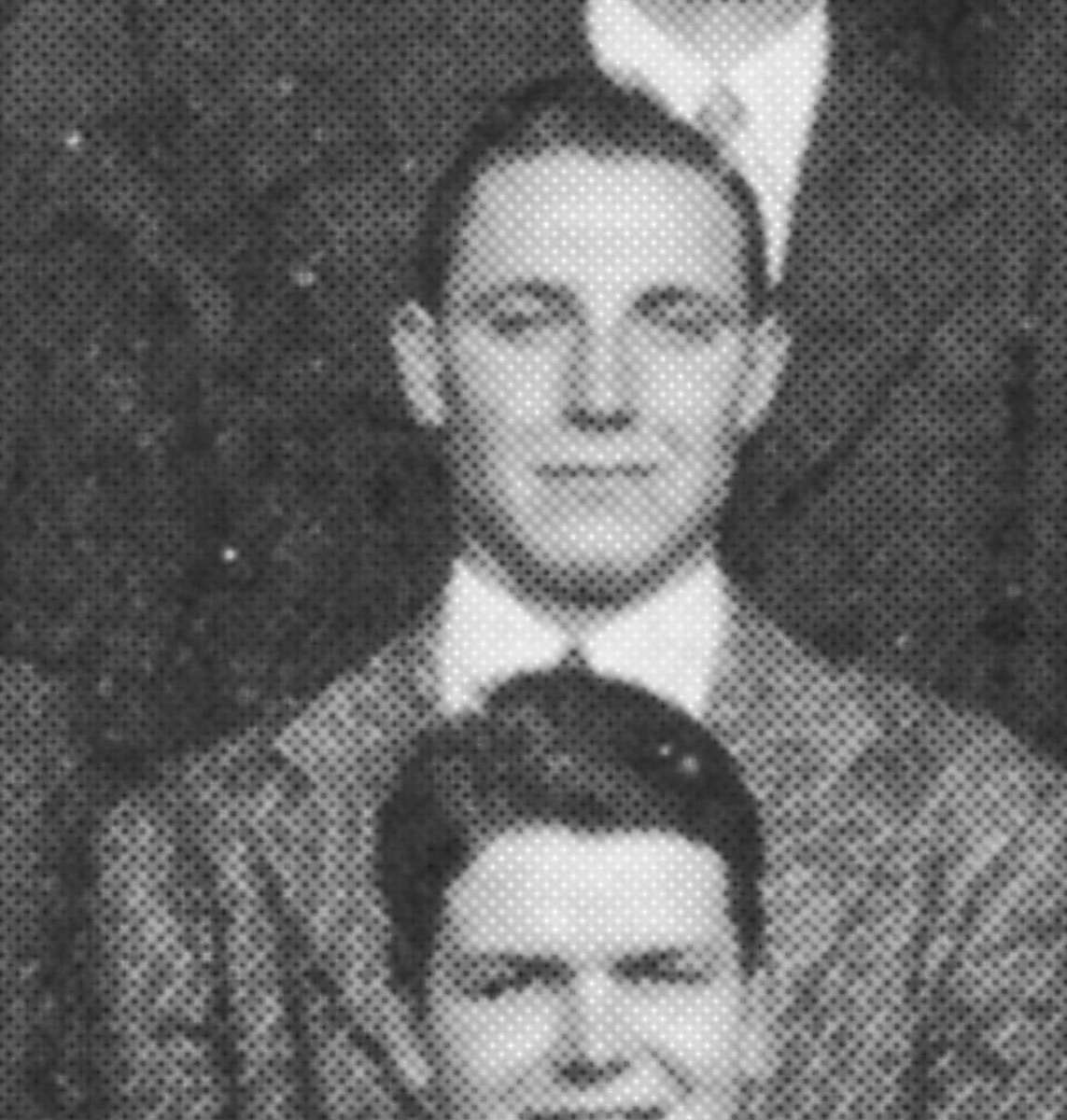Biography
William F. Hedges was born in Chicago, Illinois and grew up on the lower east side near the Indiana border.
He attended Iowa Sate College from Fall 1942 to Winter 1943, and majored in Animal Husbandry.
He pledged the 60-member Phi Kappa Psi fraternity, and enjoyed the camaraderie of house mates as well as many social events. The 1943 Iowa State yearbook noted Bill’s prowess as quarterback on the freshman football team. Bill was one of 28 players who earned their numerals and the possibility of moving on to Varsity play. In that time of war, the yearbook mentions that the “armed forces were making a dent in team ranks, even before the practice sessions had closed.” Bill was also named to the undergraduate honor roll in his fraternity for his academics.
The exact course of Hedges’ life after he left Iowa State in 1943 is sketchy. He likely enlisted later that year and started his training that continued to 1944. He probably shipped to the South Pacific mid-year in 1944.
Bill served with the 13th US Army Air Force. He attained the rank of Technical Sergeant and his crew was assigned to the 371st Bomber Squadron of the 307th Heavy Bomber Group known as the "Long Rangers".
In February 1945, the 307th Heavy Bomber Group was based on Morotai Island, then a part of the Netherland East Indies.
In 1945, Milton Potee was a young man who had grown up in Ames and who was also serving with the 307th Bomber Group in the South Pacific, but with the 370th squadron. Both his squadron, the 370th and Bill’s squadron, the 371st, happened to be flying on the same mission on the fateful day of February 27, 1945.
Milton described that mission:
“On February 27th Hedges' crew, flying a B-24 Liberator bomber, flew on a mission to Tarakan, an island off the coast of Borneo. Their target was a refinery and an air base for Japanese air craft. The mission was one of the “shorter” ones, taking between 8 and 9 hours. There was lots of weather on the way to and from the target but the run was successful with 1,000 lb bombs dropped down the middle of the air base runway.”
It was on that date and after that mission that Hedges' plane was reported missing. Neither the plane nor the crew was ever recovered. With so much flight time over water, it was often impossible to locate downed aircraft. It is not known if the plane was downed by enemy fire, or by mechanical or weather problems.
William F. Hedges is named on the Tablet of the Missing at the Manila American Cemetery in the Philippines. He was awarded the Air Medal with the oak leaf cluster and the Purple Heart.
